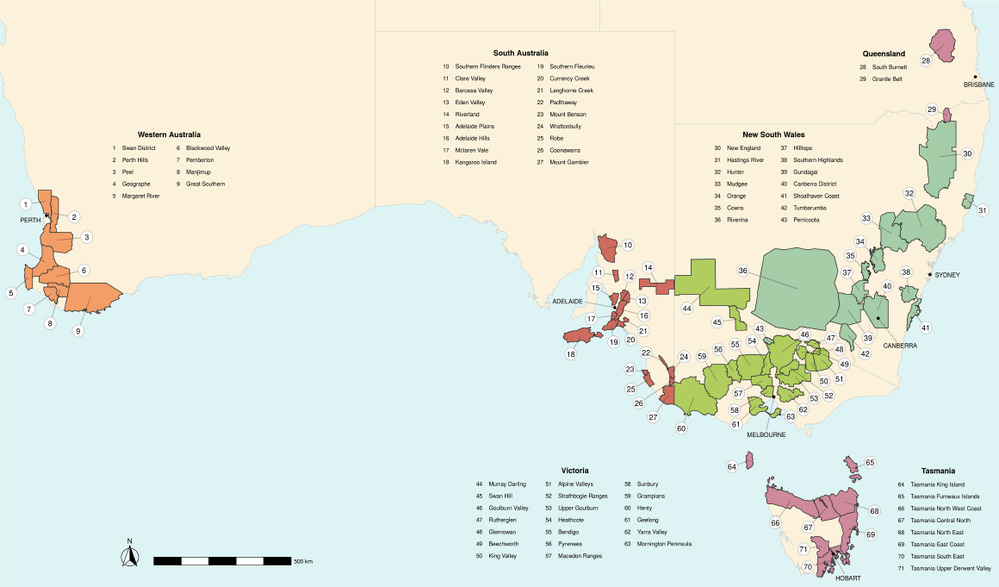mollwollfumble said:
Here’s an example for New England shown below. By 2100 under the case of high CO2 emissions projections.
- More rainfall – good
- Less aridity – good
- Less frost risk – good
- Higher mean temperature – good for plant growth
- More extreme heat – bad.
More rainfall during the growing season is good. Must check https://www.wineaustralia.com/climate-atlas to see if any part of this part of Australia is expected to get less rainfall as a result of climate change.
OK, let’s bite the bullet and look at the influence of climate change on Australian rainfall in southern eastern and western Australia.
Choose a selection of districts covering a wide geographical range.

Rainfall in growing season. The effect of climate change, from existing 1997 to 2017 to a future with large climate change 2081 to 2100.
1. Swan District, WA. From 157 mm to 135 mm
9. Great Southern, WA. From 260 mm to 163 mm
10. Southern Flinders Ranges, SA. From 194 mm to 203 mm
18. Kangaroo Island, SA. From 199 to 195 mm
28. South Burnett, Qld. From 541 mm to 602 mm
30. New England, NSW. From 585 mm to 675 mm
36. Riverina, NSW. From 228 mm to 223 mm
41. Shoalhaven Coast NSW. From 693 mm to 818 mm
60. Henty, Vic. From 293 mm to 245 mm
63. Mornington Peninsula, Vic. From 358 mm to 313 mm
65. Furneaux Islands, Tas. From 370 mm to 354 mm
66. North West Coast, Tas. From 500 mm to 421 mm
70. South East, Tas. From 454 mm to 454 mm
So climate change in southern Australia has winners and losers, and places where it hardly matters.
The big losers are in Western Australia. A drop from 260 mm during the growing season to 163 mm is a massive reduction in useful rainfall.
Other significant losers are SW Victoria, northern Tasmania and Bass Strait.
Winners are the great dividing range and east of that for Qld and NSW.
For SA, southern Tasmania, and the Riverina there’s not much change.
The higher rainfall in all the upper reaches of the Murray Darling should help that river system.


